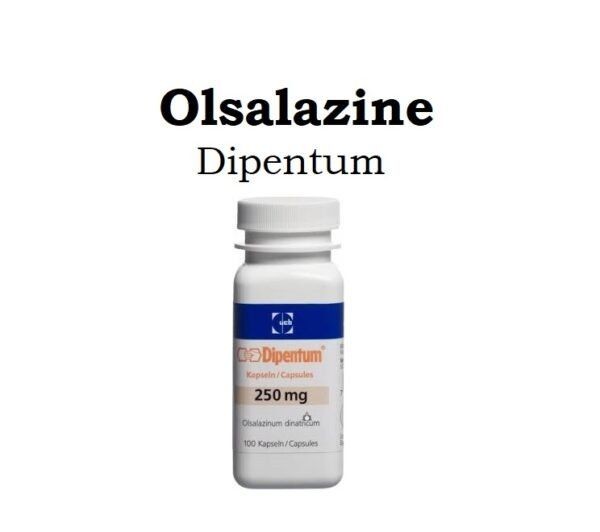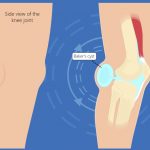
Contents
Side Effects of Dipentum (olsalazine)
Dipentum (olsalazine) is a derivative of salicylic acid used to treat inflammatory diseases of the colon such as ulcerative colitis (UC). Inactive itself, Dipentum is converted by the bacteria in the colon to its active form, mesalamine.
Following oral administration very little of the Dipentum (less than 10%) is absorbed from the intestine into the body. The benefit of mesalamine is believed to be due to a local effect from within the colon.
Mesalamine also is thought to be the active component of another drug used for treating inflammatory diseases of the intestines, sulfasalazine (Azulfidine).
Common side effects of Dipentum include
- gastrointestinal disturbances (diarrhea, abdominal pain or cramps, and nausea),
- dizziness,
- depression,
- headache,
- rashes, and
- joint pain.
Serious side effects of Dipentum include
- severe or ongoing diarrhea,
- worsening colitis,
- chest pain,
- shortness of breath,
- fast or pounding heartbeats, and
- liver problems.
- blood thinners,
- thioguanine, and
- mercaptopurine.
There are no adequate and well-controlled studies of Dipentum in pregnant women. Dipentum should be used during pregnancy only if the potential benefit justifies the potential risk to the fetus.
Mesalamine, which is the active form of Dipentum, may be secreted into breast milk and cause diarrhea in the infant. Consult your doctor before breastfeeding.
What are the important side effects of Dipentum (olsalazine)?
Common side effects are:
- gastrointestinal disturbances,
- diarrhea,
- abdominal pain, and
- nausea.
Other important side effects include:
Gastrointestinal disturbances commonly occur in persons who take olsalazine. Diarrhea occurs in about 1 of every 6 persons who take it; about one in 20 need to discontinue therapy because the diarrhea is severe.
Abdominal pain or cramps occur in 1 in 10 persons, and nausea or vomiting occurs in 1 in 20. Other side effects, including dizziness, depression, and headache, occur less frequently than gastrointestinal effects during therapy. Rashes occur in 2.3% of persons and joint pain in 4%.
Dipentum (olsalazine) side effects list for healthcare professionals
Olsalazine has been evaluated in ulcerative colitis patients in remission, as well as those with acute disease. Both sulfasalazine-tolerant and intolerant patients have been studied in controlled clinical trials.
- Overall, 10.4% of patients discontinued olsalazine because of an adverse experience compared with 6.7% of placebo patients.
- The most commonly reported adverse reactions leading to treatment withdrawal were diarrhea or loose stools (5.9% for olsalazine; 4.8% for placebo), abdominal pain, and rash or itching (slightly more than 1% of patients receiving olsalazine).
- Other adverse reactions to olsalazine leading to withdrawal occurred in fewer than 1% of patients (Table 1).
Table1: Adverse Reactions Resulting In Withdrawal From Controlled Studies Total
| Olsalazine (N = 441) |
Placebo (N = 208) |
|
| Diarrhea/Loose Stools | 26 (5.9%) | 10 (4.8%) |
| Nausea | 3 | 2 |
| Abdominal Pain | 5 (1.1%) | 0 |
| Rash/Itching | 5 (1.1%) | 0 |
| Headache | 3 | 0 |
| Heartburn | 2 | 0 |
| Rectal Bleeding | 1 | 0 |
| Insomnia | 1 | 0 |
| Dizziness | 1 | 0 |
| Anorexia | 1 | 0 |
| Light Headedness | 1 | 0 |
| Depression | 1 | 0 |
| Miscellaneous | 4 (0.9%) | 3 (1.4%) |
| Total Number of Patients Withdrawn | 46 (10.4%) | 14 (6.7%) |
For those controlled studies, the comparative incidences of adverse reactions reported in 1% or more patients treated with olsalazine or placebo are provided in Table 2.
Table2: Comparative Incidence (%) of Adverse Effects Reported By One Percent Or More of Ulcerative Colitis Patients Treated With Olsalazine Or Placebo in Double Blind Controlled Studies
| Adverse Event | Olsalazine (N=441) % |
Placebo (N=208) % |
| Gastrointestinal Disorders | ||
| Diarrhea | 11.1 | 6.7 |
| Abdominal Pain/Cramps | 10.1 | 7.2 |
| Nausea | 5.0 | 3.9 |
| Dyspepsia | 4.0 | 4.3 |
| Bloating | 1.5 | 1.4 |
| Vomiting | 1.0 | – |
| Stomatitis | 1.0 | – |
| Increased Blood in Stool | – | 3.4 |
| Metabolism and Nutrition Disorders | ||
| Anorexia | 1.3 | 1.9 |
| Nervous System Disorders | ||
| Headache | 5.0 | 4.8 |
| Insomnia | – | 2.4 |
| General Disorders and Administration Site Conditions | ||
| Fatigue/Drowsiness/Lethargy | 1.8 | 2.9 |
| Psychiatric Disorders | ||
| Depression | 1.5 | – |
| Ear and Labyrinth Disorders | ||
| Vertigo/Dizziness | 1.0 | – |
| Skin and Subcutaneous Tissue Disorders | ||
| Rash | 2.3 | 1.4 |
| Itching | 1.3 | – |
| Musculoskeletal and Connective Tissue Disorders | ||
| Arthralgia/Joint Pain | 4.0 | 2.9 |
| Infections and Infestations | ||
| Upper Respiratory Infection | 1.5 | – |
Over 2,500 patients have been treated with olsalazine in various controlled and uncontrolled clinical studies. In these as well as in post-marketing experience, olsalazine was administered mainly to patients intolerant to sulfasalazine. There have been rare reports of the following adverse effects in patients receiving olsalazine.
These were often difficult to distinguish from possible symptoms of the underlying disease or from the effects of prior and/or concomitant therapy. A causal relationship to the drug has not been demonstrated for some of these reactions.
Blood and Lymphatic System Disorders
Anemia, Eosinophilia, Hemolytic anemia, Interstitial pulmonary disease, Leukopenia, Lymphopenia, Neutropenia, Reticulocytosis, Thrombocytopenia
Cardiac Disorders
Chest pains, Heart block second degree, Myocarditis, Palpitations, Pericarditis, Peripheral edema, Shortness of breath, Tachycardia
A patient who developed thyroid disease 9 days after starting DIPENTUM (olsalazine sodium capsules) was given propranolol and radioactive iodine and subsequently developed shortness of breath and nausea. The patient died 5 days later with signs and symptoms of acute diffuse myocarditis.
Ear and Labyrinth Disorders
Eye Disorders
Gastrointestinal Disorders
Abdominal pain (upper), Diarrhea with dehydration, Dry mouth, Epigastric discomfort, Flare in symptoms, Flatulence, Increased blood in stool, Pancreatitis, Rectal bleeding, Rectal discomfort
In a double-blind, placebo-controlled study, increased frequency and severity of diarrhea were reported in patients randomized to olsalazine 500 mg B.I.D. with concomitant pelvic radiation.
Rare cases of granulomatous hepatitis and nonspecific, reactive hepatitis have been reported in patients receiving olsalazine. Additionally, a patient developed mild cholestatic hepatitis during treatment with sulfasalazine and experienced the same symptoms two weeks later after the treatment was changed to olsalazine. Withdrawal of olsalazine led to complete recovery in these cases.
General Disorders and Administration Site Conditions
Immune System Disorders
Laboratory
ALT (SGPT) or AST (SGOT) elevated beyond the normal range.
ALT (SGPT) or AST (SGOT) elevated beyond the normal range.


